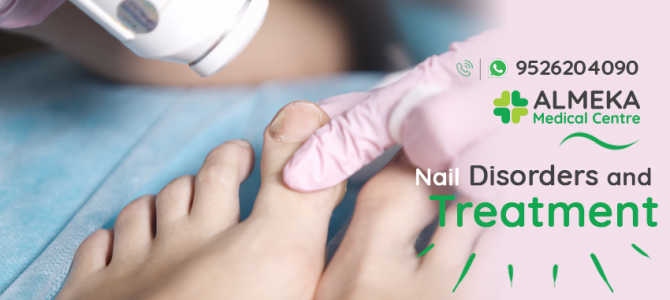Nail disorders treatment in kochi
A nail is an essential part of a person’s body. Damage to one’s nail can be a distressing factor too. Nail infection or fungus appearing in the nail can be a frequently occurring condition.
It begins with a white or yellow spot beneath the tip of one’s fingernail or toenail. When the infection grows, the fungus may result in thickening, discoloration, and crumbling of the nail.
If you’re undergoing a mild or less infectious condition, you may not require treatment. On the other hand, if your fungus is intensely painful, self-care measures and medications need to be taken.
Hence, Nail fungus can often come back if you keep your nails untidy. Onychomycosis is another term for nail fungus. When fungus causes infection in the areas between one’s toes and the skin of your feet, it’s called athlete’s foot. we ptovides one of the best Nail disorders treatment in kochi
Symptoms
The symptoms of your nail fungus may include:-
- Discoloration (pale to yellow-brown)
- Thickened at the tip
- Deformed in shape
- Slightly foul smell
- Nails become brittle
- The Occurrence of dark color under your nail.
- Nail fungus occurs in toenails more frequently but can be seen in fingernails too.
When to consult a doctor
The need to consult a physician may arise if self-care remedies haven’t helped, and the nail becomes more and more discolored, thickened, or distorted.
Causes of Fungal Nails
The fungal infection may arise due to the development of microorganisms (fungi). The most frequent cause is a type of fungus known as a dermatophyte. Yeast and mold can also result in nail infections. The fungal infection may develop in all age groups. Most commonly seen in the older age group. The nail becomes brittle and dry, as age increases. Other factors may include reduced blood circulation to the feet and a weakened immune system. Toenail fungal infection may spread from one nail to another.
Diagnosis
The doctor will examine the nails. They may capture some nail clippings from your nail and send the sample to a laboratory to analyze the type of fungus causing the infection. By knowing the cause of your infection helps to choose the right treatment.
Prevention
- Wash your hands with sanitizers and keep them clean. Apply nail cream after washing
- Avoid applying nail polish and usage of artificial nails.
- Trim your nails every two weeks, to avoid fungal infections
- Use sterilized manicure types of equipment, when in need to use.
- You can apply your nails with medicated nail polish for a few days as recommended by the doctor.

